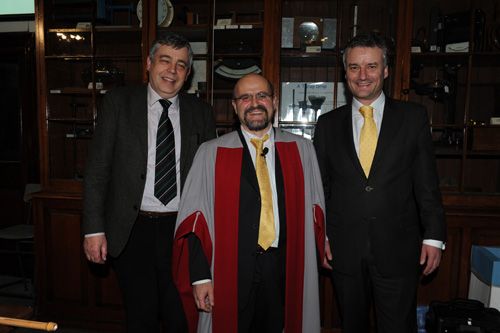Inaugural Lecture of Professor of Condensed Matter Theory Stefano Sanvito
Posted on: 18 February 2013
‘One application one material … and one theory to find them all’
Professor of Condensed Matter Theory Stefano Sanvito at the School of Physics and the Nanoscience Institute, CRANN, gave his inaugural lecture on February 13th last.
“From the steam engines that powered the industrial revolution to the transistors that make every computer work, any given technology has always been intimately related to a material, steel for the engines and silicon for the transistors. Today once a material is chosen, it gets locked with its technology by the investments associated to establishing large-scale production lines. It is therefore crucial to pick the right material or to invent a new one if needed at the right time … but how can one systematically discover and design new materials? A happy marriage between computational quantum mechanical and thermodynamic approaches with a multitude of techniques rooted in intelligent data mining and database construction provides the answer.”

Prof James Lunney, Head of School of Physics, Professor Stefano Sanvito and Provost, Dr Patrick Prendergast.
In his lecture, Professor Sanvito presented the concept of high-throughput computational materials design, a novel approach to the discovery, design and optimisation of materials. It is a simple yet powerful concept: create a large database containing the calculated thermodynamic and electronic properties of existing and hypothetical materials and then intelligently interrogate the database in the search of materials with the desired properties. Web-based search interfaces complete the picture. Professor Sanvito discussed the main ideas and presented how the method can be applied to the discovery of new magnets, a particularly intriguing class of materials, where tiny modifications in either the chemical composition or the lattice structure can produce enormous changes in the properties. In particular he discussed examples related to the discovery of new magnets for either energy and data storage applications.
